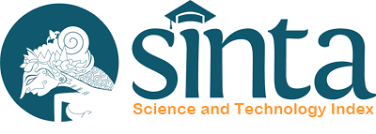Sosialisasi Pengolahan Limbah Sekam Padi Menjadi Bahan Bakar Alternatif pada IKM Penggilingan Padi
Abstract
Waste is a by-product that is produced in almost all industries, as well as in rice milling SMEs. The waste produced by IKM calling rice is rice husk. At this time rice husk waste is only sold at very cheap prices to other IKM. Whereas rice husk can be processed into various products, one of which is briquettes as an alternative fuel from biomass. Where briquettes are quite in demand by some people so that the selling price is also higher and the method of manufacture is quite easy. Therefore, the purpose of this community service is to provide socialization regarding the use of rice husk as an alternative fuel. The activity was carried out at rice milling IKM in Gowa district, with a total of 17 participants. Activities are divided into four stages including planning, preparation, implementation and evaluation. Planning and preparation is carried out with site surveys and interviews with partners regarding any problems encountered. At the implementation stage, participants received material exposure regarding the dangers of waste utilization and procedures for processing rice husks into briquettes, and submitted briquettes that had previously been made on campus as a reference. Furthermore, the evaluation stage is carried out through filling out questionnaires which are distributed during the implementation process. The target of carrying out this activity is that partners know the process of processing rice husk waste into a product that has high selling value in the form of briquettes.
Downloads
References
Akubuo, C. O. (n.d.). Development of an Appropriate Briquetting Machine for Rural Communities Development of a cocoayam peeling machine View project Is a project of itself View project. In International Journal of Engineering and Advanced Technology. https://www.researchgate.net/publication/277582032
Ansar, A., Setiawati, D. A., Murad, M., & Muliani, B. S. (2020). Karakteristik Fisik Briket Tempurung Kelapa Menggunakan Perekat Tepung Tapioka. Jurnal Agritechno, 1–7. https://doi.org/10.20956/at.v13i1.227
Asfar, A. M. I. A., Asfar, A. M. I. T., Thaha, S., Kurnia, A., Budianto, E., & Syaifullah, A. (2022). Pelatihan Transformasi Sekam Padi Sebagi Biochar Alternatif. Kumawula: Jurnal Pengabdian Kepada Masyarakat, 5(1), 95. https://doi.org/10.24198/kumawula.v5i1.35974
Fathonah, W., Kusuma, R. I., Wigati, R., Mina, E., & Aditya, M. R. (2023). Pemanfaatan limbah sekam padi menjadi briket sebagai upaya inovasi potensi lokal di Desa Panenjoan. KACANEGARA Jurnal Pengabdian Pada Masyarakat, 6(2), 233. https://doi.org/10.28989/kacanegara.v6i2.1581
Franco, S., Mandla, V. R., & Ram Mohan Rao, K. (2017). Urbanization, energy consumption and emissions in the Indian context A review. In Renewable and Sustainable Energy Reviews (Vol. 71, pp. 898–907). Elsevier Ltd. https://doi.org/10.1016/j.rser.2016.12.117
Gunawan, P., Ali, A., Hanum Hamzah, F., Studi Teknologi Hasil Pertanian, P., & Teknologi Pertanian, J. (2018). Variasi Komposisi Jerami Dan Sekam Padi Terhadap Mutu Briket Bioarang Rice Straw And Rice Husk Composition Variety On The Quality Of Bio-Charcoal Briquette.
Idah, P. A. (2013). Comparative Assessment of Energy Values of Briquettes from Some Agricultural By-Products with Different Binders. IOSR Journal of Engineering, 3(01), 36–42. https://doi.org/10.9790/3021-03143642
Indah Listianaa, R. B. R. W. A. R. H. J. (2021). Pemanfaatan Limbah Sekam Padi Dalam Pembuatan Arang Sekam di Pekon Bulurejo Kecamatan Gadingrejo Kabupaten Pringsewu.
Karyaningsih, S., Pengkajian, B., Pertanian, T., & Tengah, J. (2012). Pemanfaatan Limbah Pertanian Untuk Mendukung Peningkatan Kualitas Lahan Dan Produktivitas Padi Sawah. In Buana Sains (Vol. 12).
Maghfirah, T., Nanda, D., Rahmadani, A., Prajumarse, A., Azwan, S., & Tikollah, M. R. (2021). Program Pembuatan Briket Melalui Pemanfaatan Limbah Daun Karet Untuk Mengukur Pemahaman, Kemampuan, dan Inisiatif Istri Petani Karet Di Desa Balleanging, Bulukumba. Pengabdi: Jurnal Hasil Pengabdian Masyarakat , 2 No.1.
Paduloh, Fauzi, A., Fauzan, A., Zulkarnaen, I., & Ridwan, M. (2021). Pelatihan Pemanfaatan Limbah Sekam Padi Menjadi Briket Untuk Meningkatkan Nilai Ekonomis. http://ojs.ubharajaya.org/index.php/jabdimas
Patandung, P., Riset, B., Standardisasi, D., Manado, I., & Tanggal, D. (2014). Pengaruh Jumlah Tepung Kanji Pada Pembuatan Briket Arang Tempurung Pala The Effect Of Tapioca Starch Variation On Nutmeg-Shell Charcoal Briquette Preparation. In Jurnal Penelitian Teknologi Industri (Vol. 6, Issue 2).
Patil, G. (2019). The possibility study of briquetting agricultural wastes for alternative energy. Indonesian Journal of Forestry Research, 6(2), 133–139. https://doi.org/10.20886/IJFR.2019.6.2.133-139
Shelvia Deviani, S., Widhi Mahatmanti, F., Nuni Widiarti Jurusan Kimia, dan, & Matematika dan Ilmu Pengetahuan Alam, F. (2018). Indonesian Journal of Chemical Science Sintesis dan Karakterisasi Zeolit dari Abu Sekam Padi Menggunakan Metode Hidrotermal. In J. Chem. Sci (Vol. 7, Issue 1). http://journal.unnes.ac.id/sju/index.php/ijcs
Sunarsih, E., Pengajar, S., & Kesehatan, F. (2014). Konsep Pengolahan Limbah Rumah Tangga Dalam Upaya Pencegahan Pencemaran Lingkungan Concept Of Household Waste In Environmental Pollution Prevention Efforts. https://ejournal.fkm.unsri.ac.id/index.php/jikm/article/view/158
Termal, K., Arang, B., Padi, S., Variasi, D., Perekat, B., & Patabang, D. (2012). Karakteristik Termal Briket Arang Sekam Padi Dengan Variasi Bahan Perekat.


.png)

.png)




.png)
.png)


